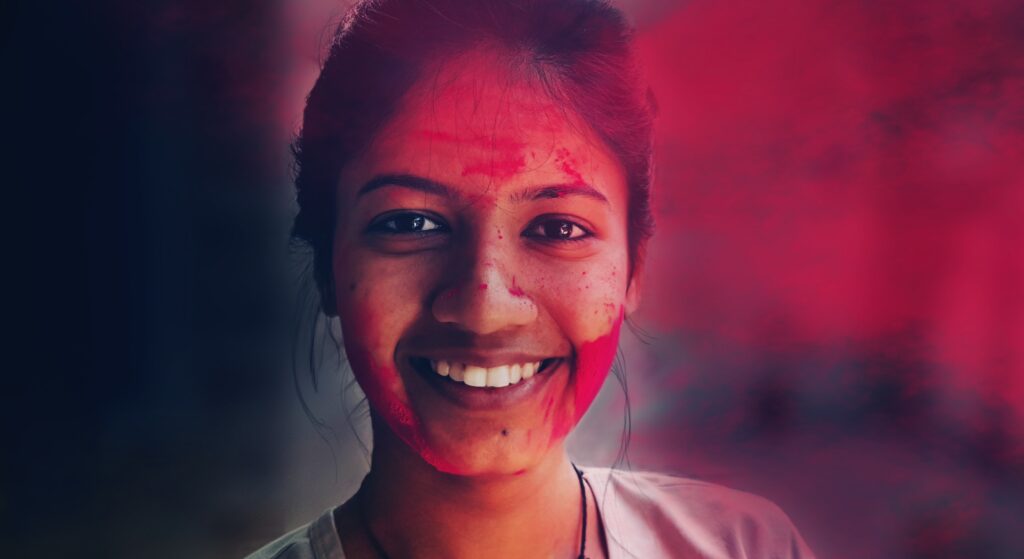Indian dimples rarity has always been a topic of fascination for many people. Whether you're from India or elsewhere, the allure of dimples is undeniable. These small indentations on the cheeks have a charm that transcends cultural boundaries. They are often associated with youth, beauty, and charm, making them a coveted feature in the world of aesthetics.
Dimples are not just a physical trait but also carry cultural significance in many societies, including India. In Indian culture, dimples are often seen as a sign of good fortune and beauty. They are celebrated in literature, art, and even in Bollywood movies, where they have become an iconic feature of many famous actresses.
However, not everyone is born with dimples, and their rarity adds to their appeal. This article delves into the science behind dimples, their cultural significance, and why they are considered so rare and enchanting, especially in the Indian context.
Read also:Hozier
Table of Contents
- What Are Dimples?
- Genetics of Dimples
- Cultural Significance of Dimples in India
- Indian Dimples Rarity: Statistics and Facts
- Dimples in Bollywood
- How to Get Dimples?
- Health Implications of Dimples
- Dimples in Other Cultures
- Myths About Dimples
- Conclusion
What Are Dimples?
Dimples are small indentations that appear on the cheeks, usually when a person smiles. They are caused by a variation in the structure of the facial muscles, specifically the zygomaticus major muscle. In people with dimples, this muscle is shorter and creates a slight depression on the skin's surface when the muscle contracts during smiling.
Dimples can occur on one or both cheeks and come in various shapes and sizes. While they are often seen as a desirable trait, not everyone is born with them, which contributes to their rarity and charm.
Interestingly, dimples are not just a cosmetic feature. They have been studied for their potential genetic and evolutionary significance, making them a fascinating subject for both scientists and beauty enthusiasts alike.
Genetics of Dimples
Understanding the Genetic Basis
The presence of dimples is largely determined by genetics. Research suggests that dimples are inherited as an autosomal dominant trait, meaning that if one parent has dimples, there is a high likelihood that their children will also have them. However, the inheritance of dimples is not always straightforward, as other genetic and environmental factors can influence their appearance.
Some studies indicate that dimples may be caused by a mutation in the zygomaticus major muscle, which affects its shape and structure. This mutation is believed to be hereditary, but the exact genetic mechanism is still not fully understood.
Cultural Significance of Dimples in India
In Indian culture, dimples are often associated with beauty, charm, and good fortune. They are frequently depicted in traditional art and literature as a symbol of grace and elegance. Bollywood movies, in particular, have played a significant role in popularizing the image of dimples as a desirable feature.
Read also:Sanju Samson
Many famous Bollywood actresses, such as Aishwarya Rai Bachchan and Deepika Padukone, are known for their stunning looks and charming dimples. Their popularity has further cemented the cultural significance of dimples in Indian society.
Indian Dimples Rarity: Statistics and Facts
How Rare Are Dimples in India?
While dimples are relatively common in India, they are still considered a rare and desirable trait. According to a study conducted by the Indian Journal of Dermatology, approximately 20-25% of the Indian population has dimples. This percentage may vary depending on regional and genetic factors.
Interestingly, dimples are more common in certain ethnic groups within India, such as the Punjabi and Tamil communities. This suggests that genetic diversity plays a significant role in the prevalence of dimples in different regions.
- Approximately 20-25% of Indians have dimples.
- Dimples are more common in certain ethnic groups, such as Punjabi and Tamil communities.
- The prevalence of dimples varies by region and genetic factors.
Dimples in Bollywood
Bollywood has long been a platform for celebrating beauty and charm, and dimples have become an iconic feature of many famous actresses and actors. Stars like Aamir Khan, Kareena Kapoor Khan, and Priyanka Chopra have used their dimples to captivate audiences worldwide.
In addition to their aesthetic appeal, dimples in Bollywood are often associated with positive personality traits such as kindness, warmth, and approachability. This has contributed to their popularity not only in India but also globally.
How to Get Dimples?
Surgical and Non-Surgical Options
For those who do not have natural dimples, there are several options available to achieve them. One of the most popular methods is dimpleplasty, a surgical procedure that creates dimples by altering the structure of the facial muscles. This procedure is relatively simple and can be performed under local anesthesia.
Alternatively, there are non-surgical methods, such as facial exercises and temporary dimple creation techniques, that can help mimic the appearance of dimples. However, these methods are not permanent and may require consistent effort to maintain the desired effect.
Health Implications of Dimples
While dimples are generally considered a cosmetic feature, they can have some health implications. For example, people with dimples may be more prone to certain skin conditions, such as dimple cysts, which can occur when the dimple becomes blocked or infected.
It is important to consult a dermatologist or healthcare professional if you notice any unusual changes in your dimples or surrounding skin. Proper care and maintenance can help prevent potential complications and ensure that your dimples remain healthy and beautiful.
Dimples in Other Cultures
While dimples are celebrated in Indian culture, they also hold significance in other parts of the world. In Western cultures, dimples are often associated with innocence and charm, making them a desirable feature in the beauty industry.
In some African cultures, dimples are seen as a sign of good health and prosperity. Similarly, in East Asian cultures, dimples are often associated with good fortune and happiness.
Despite cultural differences, the universal appeal of dimples highlights their importance as a symbol of beauty and charm across the globe.
Myths About Dimples
There are several myths and misconceptions surrounding dimples. One common myth is that dimples are always inherited from one's parents. While genetics play a significant role in the formation of dimples, other factors such as muscle structure and environmental influences can also contribute to their appearance.
Another myth is that dimples are a sign of bad luck or misfortune. This belief is not supported by scientific evidence and is often rooted in cultural superstitions.
By understanding the science behind dimples and their cultural significance, we can dispel these myths and appreciate the true beauty of this enchanting feature.
Conclusion
In conclusion, Indian dimples rarity continues to captivate people around the world. Whether you're born with them or choose to enhance your appearance through surgical or non-surgical methods, dimples remain a symbol of beauty, charm, and cultural significance.
We encourage you to share your thoughts and experiences in the comments section below. If you enjoyed this article, don't forget to share it with your friends and family. For more fascinating content, explore our other articles on beauty, culture, and science.
References:
- Indian Journal of Dermatology
- Journal of Plastic, Reconstructive & Aesthetic Surgery
- Cultural studies on beauty and aesthetics


